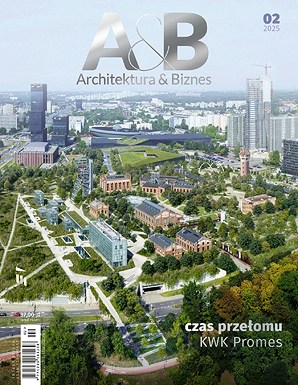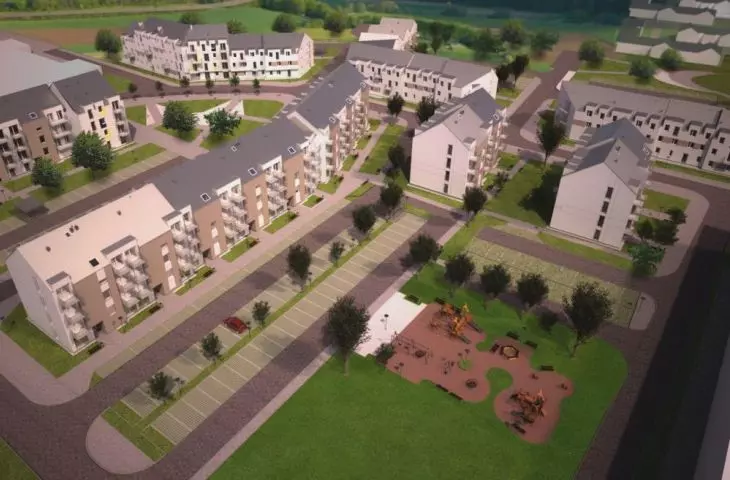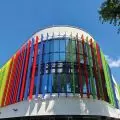After years of drought, the mere fact that more public housing is being built is still supposed to be enough for us. But it's time we were informed not only how much is being built, but also—how. And also, what the prospective plans for municipal housing look like and who is behind them.
More and more municipal housing has been built for several years in Poznań. The number of units handed over annually now goes into the hundreds, not dozens. The apartments are being built not—as they were a few years ago—in repetitive buildings squeezed in wherever, according to a flawed design, but in larger complexes. They are designed better and more original, although architects are still chosen by tender (we presented the critical opinion of the president of the Poznań SARP on this issue here).
The largest development complex, so far, has been built in the south of the city, on Opolska Street. Now the big investment field is Darzybor, located in the east of the city. Two years ago a complex of low-rise social housing (50 apartments) developed in cooperation with the Barka Foundation was built there (about the implementation and its social aspect: here).
A bus stop in Darzybor, a remote area from the city center (behind the railroad freight bypass) is served by two daily bus lines (from 3 to 5 courses per hour in total)
photo: Jakub Glaz
square footage, balcony and enough
Now, the Board of Communal Housing Resources, which is putting up municipal buildings, has announced that it will launch a tender for the construction of the first of seven houses (this time not social, but communal) on Darzyborska Street. It also showed visualizations of the decent-looking housing complex, which will include 252 apartments. On the City's and ZKZL's website (also on their Facebook profiles), the citizen gets these images and a concise message that the latest development is:
a four-story building, whichwill have a total of 15 apartments of about 45sqm. Fourteen two-room units have been designed, as well as a one-room apartment with a separate kitchen, adapted to the needs of people with disabilities. All apartments will have balconies.
Plus a few sentences about the obvious, such as the construction of roads and infrastructure, and that's the end of it. Despite repeated requests, ZKZL, when publishing news about the new investment, again did not specify the author of the project, or the mode in which it was selected. These and other data always have to be "extracted" from the Board with separate phone calls and e-mails, wasting their own time and that of the friendly and helpful ZKZL spokesman (this time it was possible to establish that the company JKW Projekt, selected in a tender, was behind the project, and the data was included in the Board's services). There is also still no coherent information available to the public on what the ultimate intentions of the new housing estate are, what standard the common spaces will be, what about space for services, and when the next buildings will be built (eventually, the spokesman we questioned informed us that their construction depends on unknown plans for road and water supply construction).
communal housing estate on Darzybor in Poznań, visualization; the visualizations shown by ZKZL do not provide information on the target shape of the estate or the context in which it is located, they do not even show the one-story social buildings erected by the Board three years ago
source: ZKZL Poznań /© proj.: JKW Projekt
no clear standards
It is also not apparent that the Board has developed any standards for the construction of new houses and housing developments. For the use of its developments, does the City set any metric minima or optima? Are there guidelines for the design of projections? Finally, are low-rise buildings required to be designed in such a way that an elevator riser can easily be added in the future, and photovoltaics can be installed on the roof? What about retention, minima of biologically active area, green roofs, common facilities, playgrounds? What about adaptation to climate change and ecological requirements? What about the accessibility of public schools and efficient transportation to the center (on Darzybor these are problematic issues)?
With the ongoing construction offensive, defining such standards could facilitate the entire investment process. The city should also remember that it is designing for itself: it will manage the buildings it puts up today for decades to come. All the more reason why it should care about both the quality and flexibility of the projects being built now. Finally, by providing new housing units, the magistrate also has a chance to show how the space around them should be shaped—in a way that is far from developer cramp and the pursuit of profit; with care for social functions, greenery and aesthetics.
Municipal housing estate on Darzybor in Poznań, visualization
Source: ZKZL Poznań / © proj.: JKW Projekt
real promotion
This is nothing new, by the way. For more than a century, the construction of municipal housing estates has been an opportunity for a public investor to comprehensively meet not only housing needs, but also to create a piece of a decent city. In doing so, he often introduced innovations or improvements that were not offered by private tenements. Ambitious architects developed the "Red Vienna" apartments, the Montwiłł-Mirecki estate in Łódź, the cooperative colonies of the WSM in Warsaw and many other complexes whose added value was the promotion of rational, economical and friendly architecture.
Today, too, it should be up to the public or social investor to create model estates and buildings, to introduce bold innovations (which developers are afraid of) and to transparently communicate form, function, standards and prospective intentions. Finally, well-orchestrated competitions (instead of tenders) for the design of larger housing complexes are both a chance for the best design and to raise the level of public discussion about architecture. And successful realizations, awarded in rankings and shown in the media, are a much better advertisement for the city than the propaganda emptiness often pouring from magistrates' offices.


























